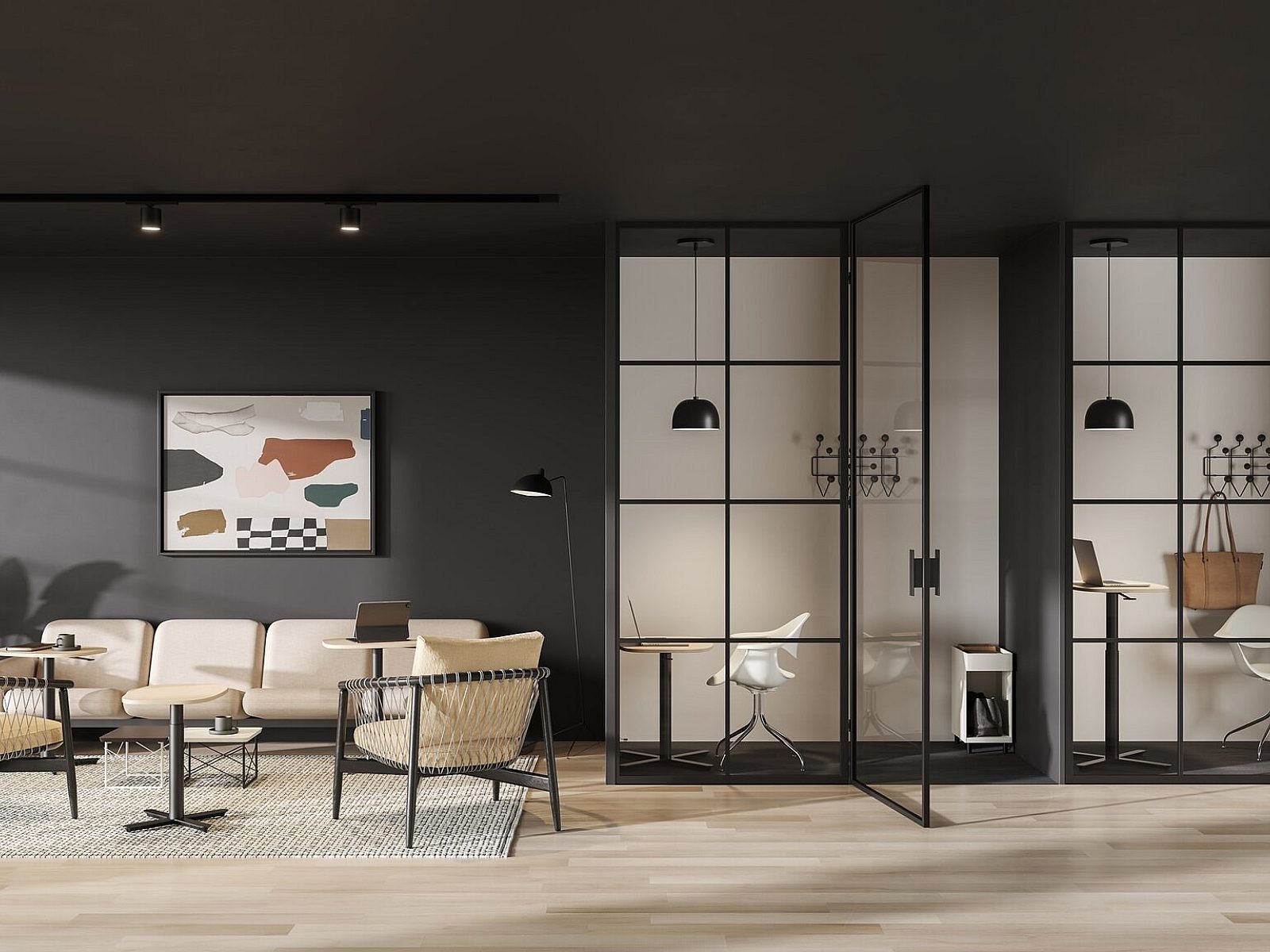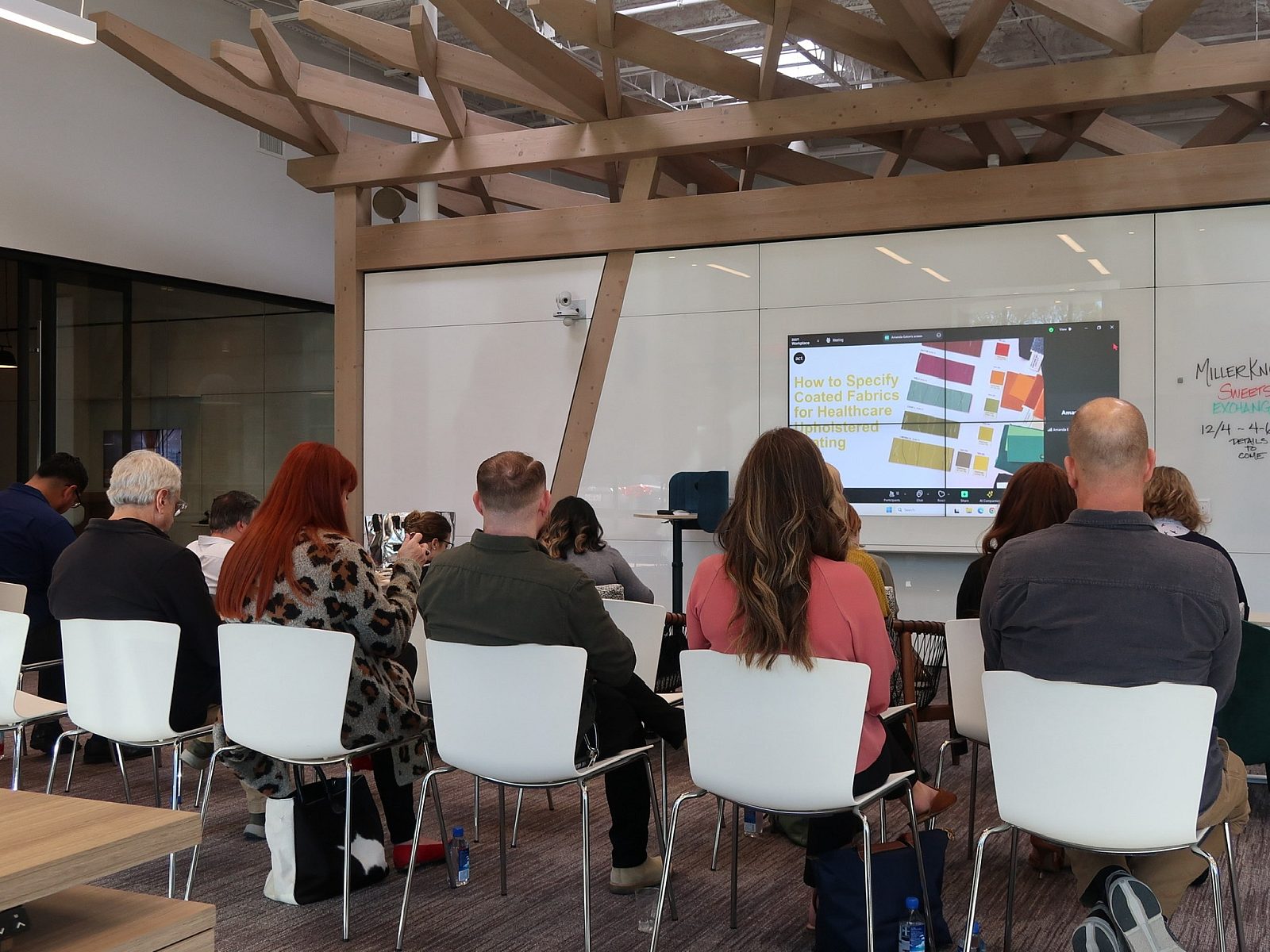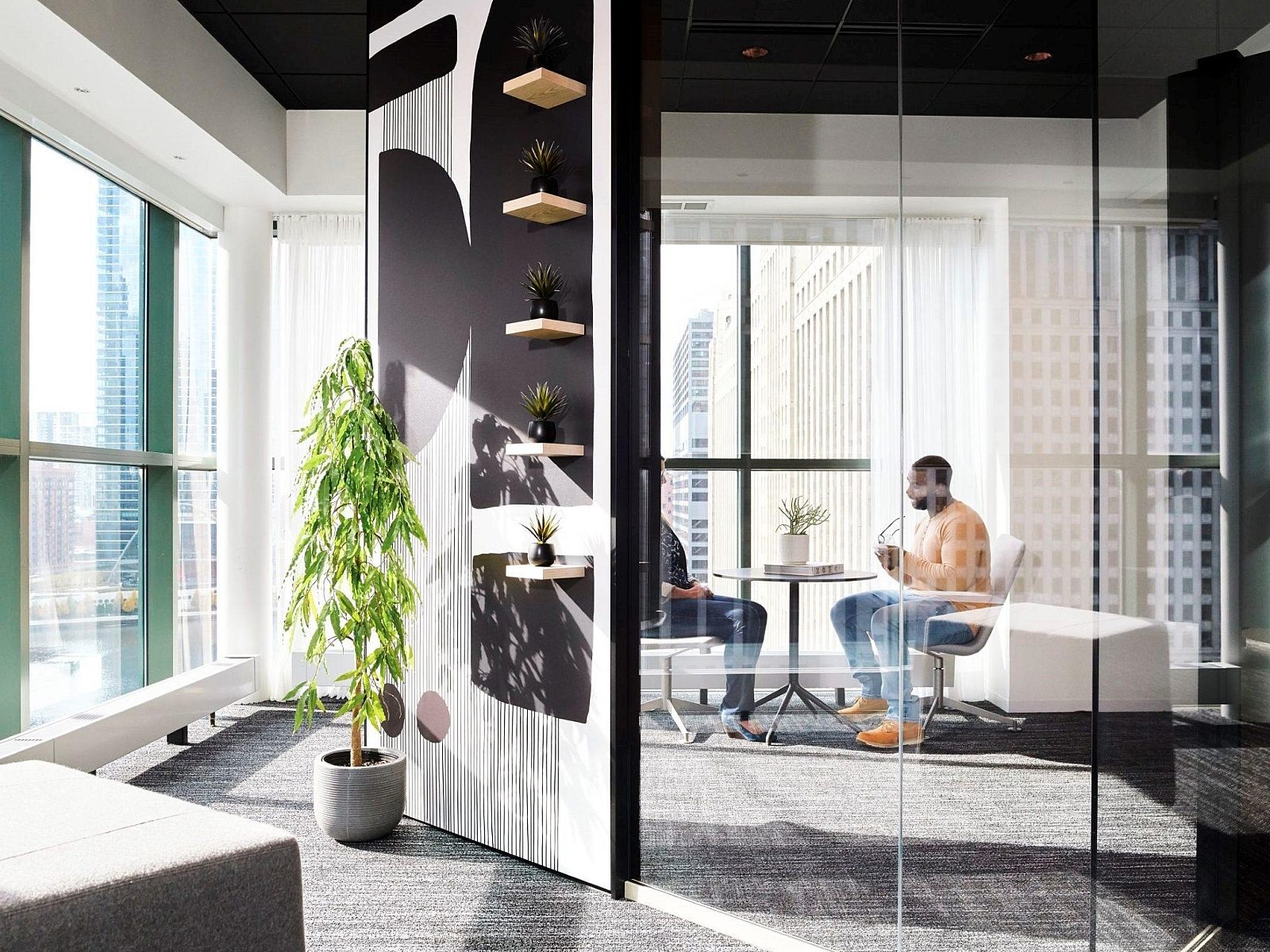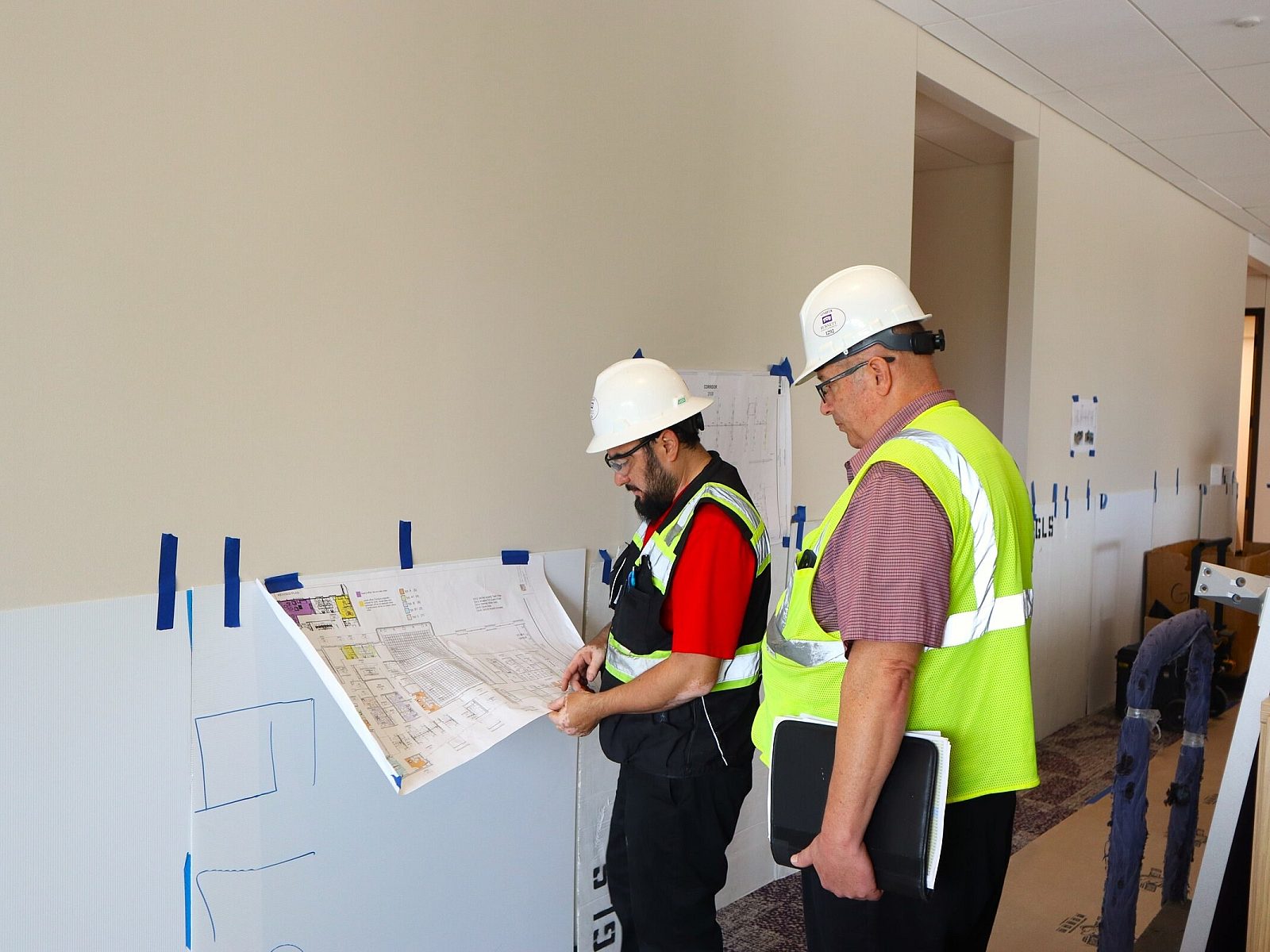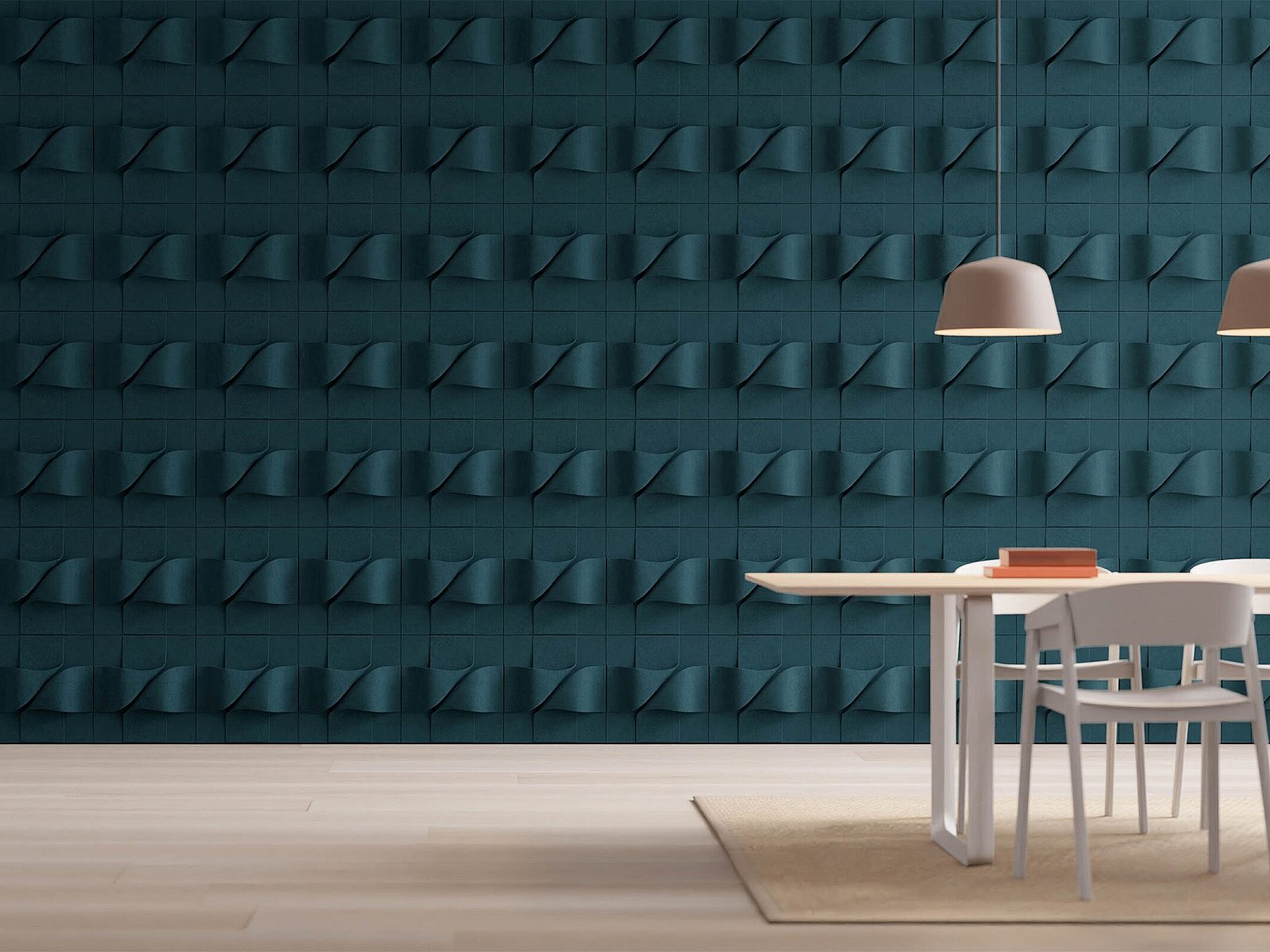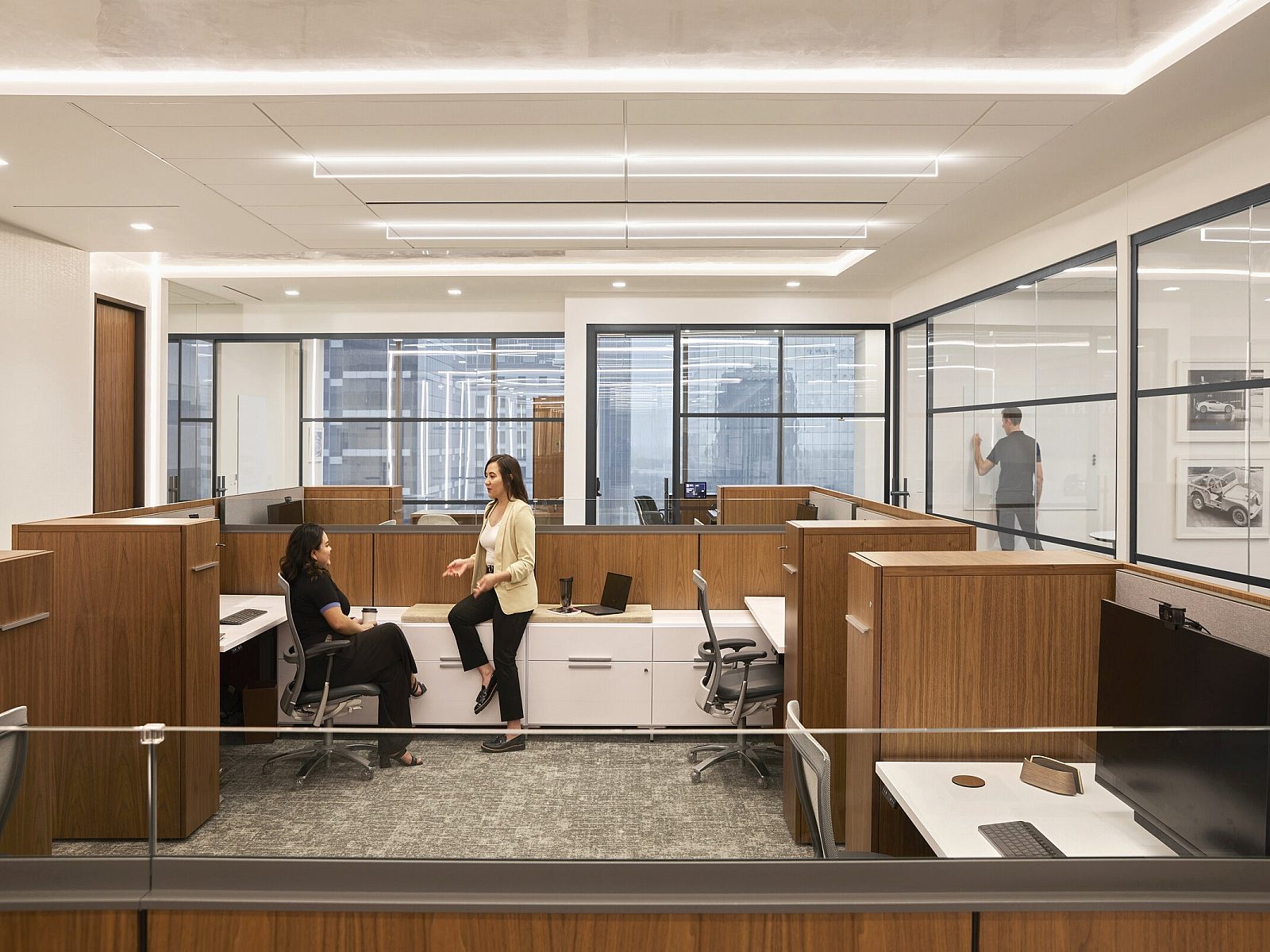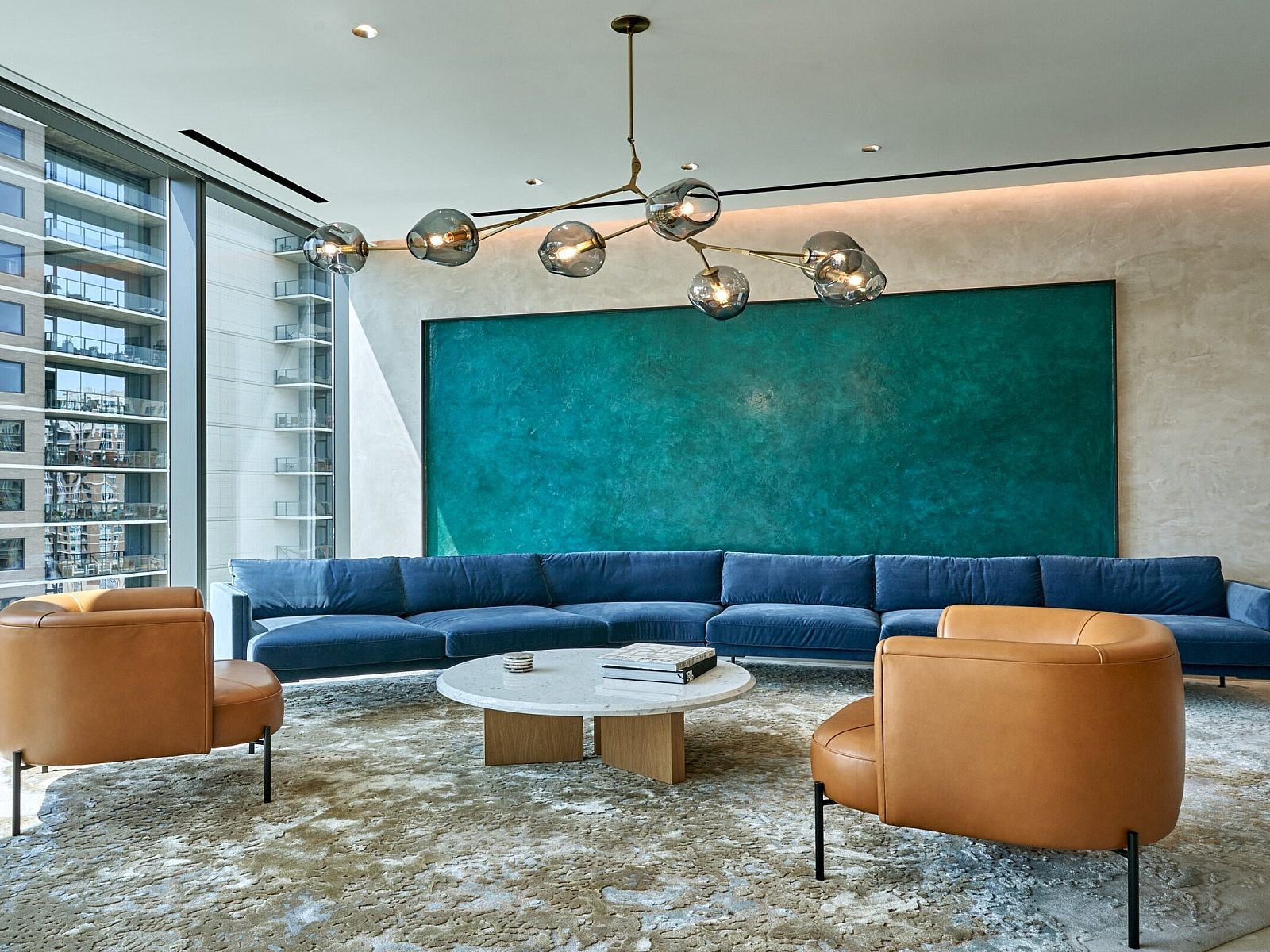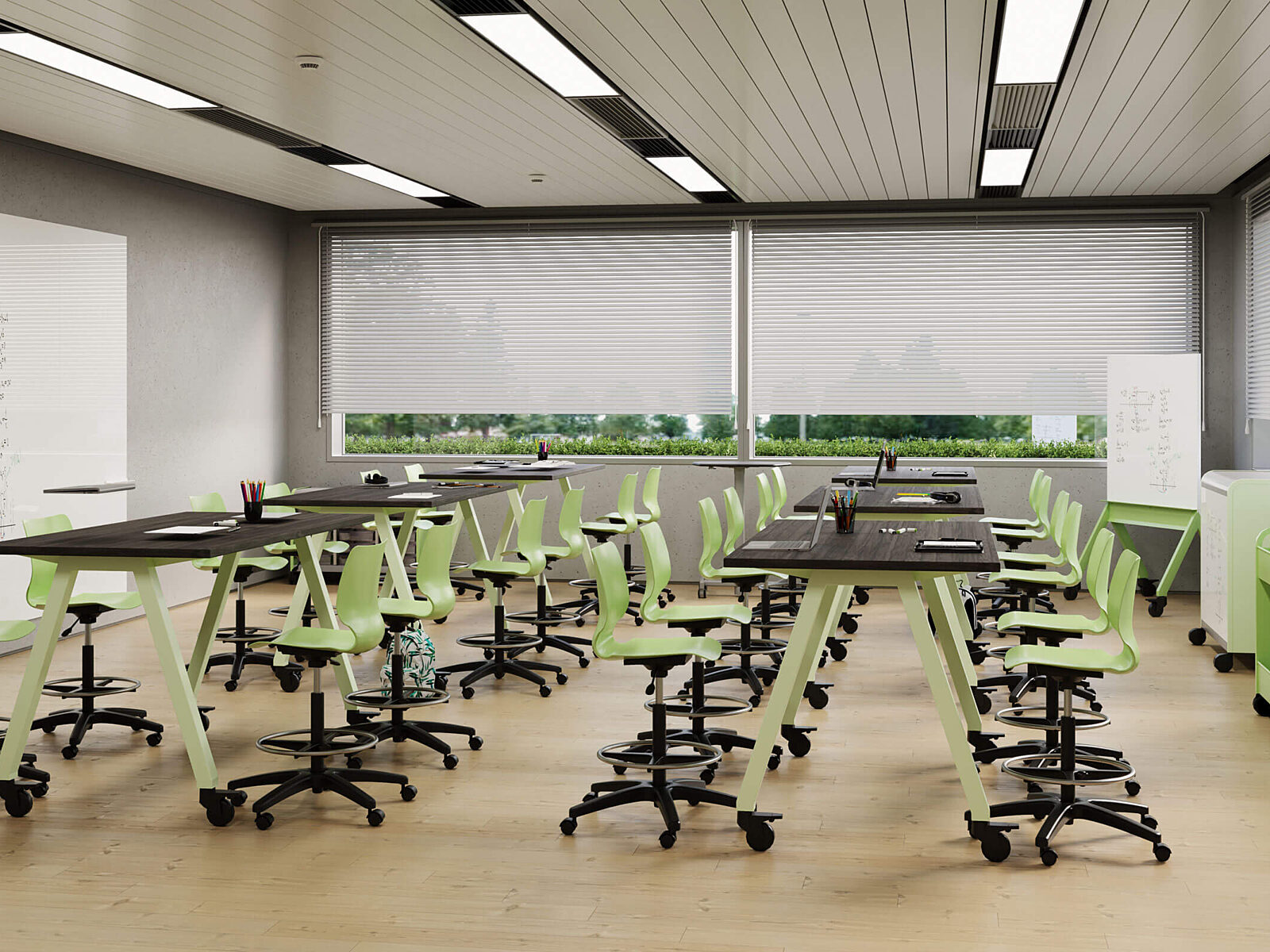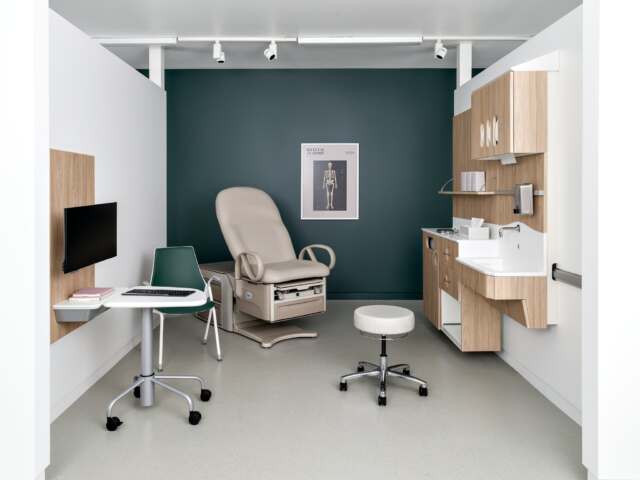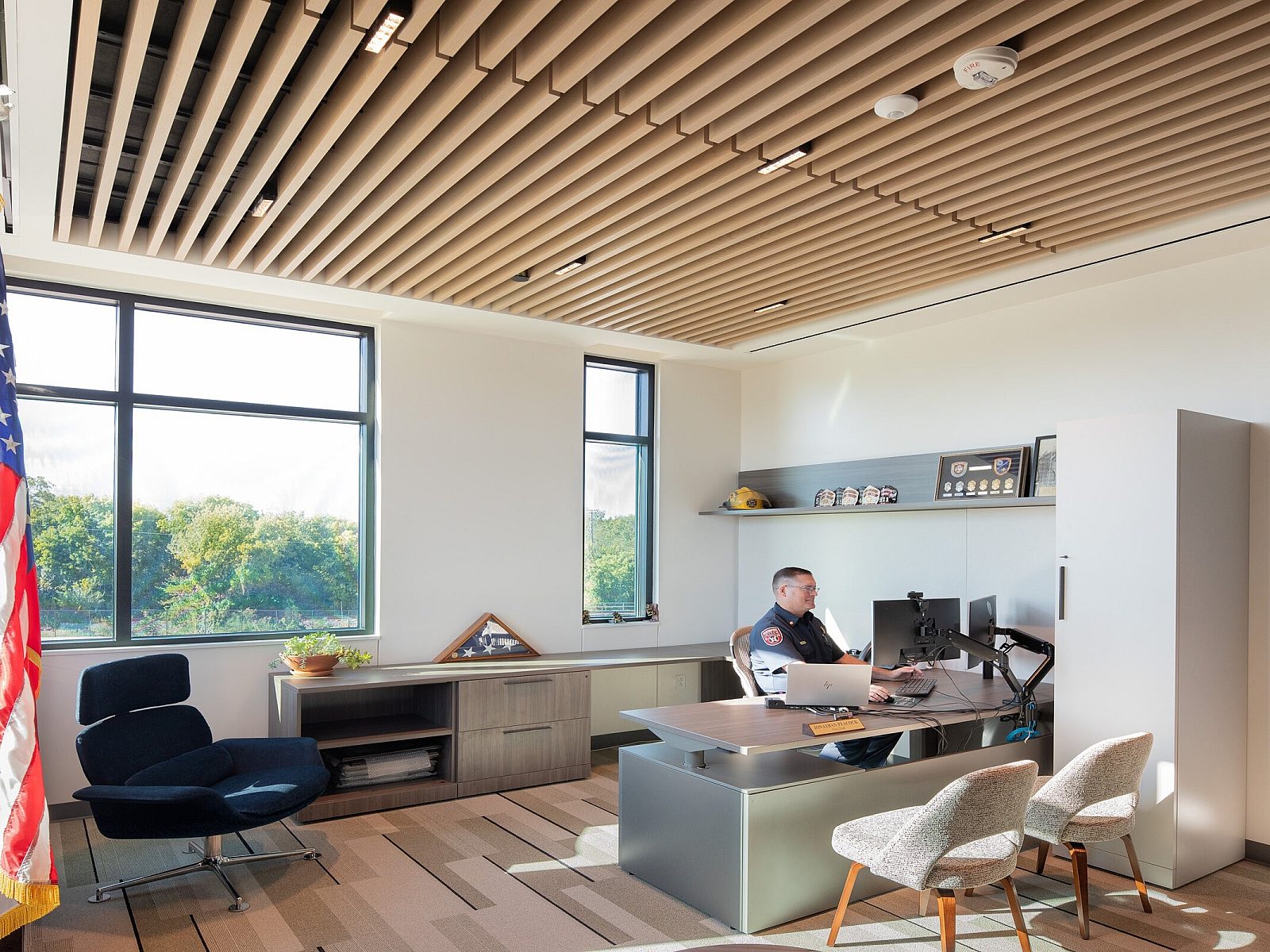Which Workplace Trends Has COVID-19 Accelerated?
March 2020 marks a turning point in the history of the modern workplace. Which trends are here to stay even post-pandemic? Read more to find out.

Which Workplace Trends Has COVID-19 Accelerated?
March 2020 marks a turning point in the history of the modern workplace. As discussed in the first installment of this content series, the most boundary-pushing features of the open office concept are now little more than anachronisms. At the same time, COVID-19 has forced architects, designers, and business leaders in virtually every industry to reassess supposedly outmoded infrastructure such as high-walled cubicles and thicker layers of middle management.
How much will the office of tomorrow resemble the office of yesteryear? Crisis management requires companies to turn inward and draw from their deep wells of experience. Yet businesses are simultaneously preparing to enter a marketplace in which widespread public health concerns have profoundly changed the rules of competition. To stay top-of-mind, brands must reengage with their customers, their employees, and their own spirit of innovation.
According to the business furniture, office design solutions, and interior construction experts at GL Seaman & Company, these are the rising workplace trends that will only gain momentum in the post-pandemic era.
1) Work-from-home policies that preserve a sense of work-life balance
What began as a tentative foray into remote work for many has already become the status quo. Judging by these headlines, business leaders are also beginning to reconcile themselves to this fact.
- “The Massive Work-From-Home COVID-19 Test Was a Great Success and Will Be the New Norm” (Forbes)
- “Some May Work From Home Permanently After Covid-19: Gartner” (CRN)
- “Study Confirms COVID-19 Impact on Cloud Adoption, Permanent Work-From-Home” (Virtualization & Cloud Review)
- “The Dangers — and Benefits — of a Post-Pandemic Work-From-Home Revolution” (Business Insider)
Of course, predictions can be prone to hyperbole. They also tend to focus more on the scope and scale of change rather than its qualitative facets. So, even if the proposal is as modest as HOK’s “four-day work week, [with teams staggered] across five days to reduce density by up to 20 percent on any given day,” businesses must reevaluate how they measure as well as incentivize productivity.
Kate Lister, President of consulting firm Global Workplace Analytics, is blunt in her assessment of pre-pandemic managerial practices. “[Managers are] used to managing by counting butts-in-seats... That’s not managing, that’s baby-sitting. What’s more, seeing the back of someone’s head tells a manager nothing about whether that person is actually working. … Micromanagement doesn’t work and neither does ‘managing by walking around’ in this global, mobile world. If people are forced to work at home for an extended period, as it appears they will be, managers will have to learn that it’s results that matter.”
Businesses must improve access to both mental and behavioral healthcare resources to get those results. That entails delivering on telecommuting’s promise of greater flexibility. Early indicators reveal that the reality for most quarantined workers is quite different. In late April, Bloomberg reported that “homebound employees [in the U.S.] are logging three hours more per day on the job than before city and state-wide lockdowns.”
The same article points to several of the unanticipated — or underestimated — costs of working from home full-time. “By early April, about 45 percent of workers said they were burned out, according to a survey of 1,001 U.S. employees by Eagle Hill Consulting. Almost half attributed the mental toll to an increased workload, the challenge of juggling personal and professional life, and a lack of communication and support from their employer.”
In response, expect more insurance providers to continue bundling online therapy and counseling services into their group plans. Look too for teams to follow the software development community’s lead in conducting daily stand-ups. Employee engagement surveys will also become a more customary feature of office life for some.
Finally, businesses will begin shifting the focus of their company’s work-from-home policy from employee privileges that can be revoked to employer-provided support mechanisms. Examples of the latter might include supplies needed to set up a dedicated, suitable home office space and scheduled unplugging — that is, limiting after-hours access to email and work-chat channels.
But do beware of issuing mandates, even if they are intended to serve your employees’ best interests. As CoreNet notes: “For now, choice has been removed [from the remote work equation]. Hopefully, when we all get back [to the office], and when choice is put back into the equation, people will crave the ability to make that decision again.”
2) A culture of collaboration
Collaboration creates value for businesses. But not all collaboration is created equal. A global study conducted by Slack in 2019 validated experiences many of us have had when using remote collaboration tools. “In person, we can hear someone’s tone of voice and see their facial expressions. Gestures help us understand what someone is trying to express. But those valuable cues can be obscured, misconstrued, or lost altogether in modern communication tools like emails and texts.”
These challenges may become trickier to overcome with the normalization of remote work. Achieving what the MIT Sloan School of Management terms “digital maturity” can help businesses not only reprioritize their operations around collaboration but also collaborate more effectively. That’s because, according to MIT’s own research, digitally mature organizations overwhelmingly “recognize and reward collaboration and cross-functional teams.”
Efforts to find a cure for COVID-19 bear out this fact. Formally announced by the National Institutes of Health (NIH) on April 17, 2020, the Accelerating COVID-19 Therapeutic Interventions and Vaccines (ACTIV) initiative is an unprecedented, global public-private partnership “to establish a collaborative framework for prioritizing vaccine and therapeutic candidates, to streamline clinical trials and tap into existing clinical trial networks, and to coordinate regulatory processes and leverage assets among all partners.” Those partners include public health agencies, pharmaceutical firms, and medical researchers at leading academic institutions, among others.
In addition to accelerating cross-functional training and collaboration, then, COVID-19 is hastening the development of digital tools that are both more open and more sophisticated. For example, the company intranet is poised to stage a major comeback in the post-pandemic era. By centralizing access to enterprise applications, facilitating communications (both top-down and peer-to-peer), and providing social media-like functionality with a robust intranet solution, businesses can create an “office away from the office.”
Implementation of such a platform also presents an opportunity for cross-functional collaboration. IT personnel, human resources managers, designers, and end-users all have critical roles to play in ensuring that the final product brings the most vital features of the offline office experience online.
And where does that leave the offline office experience? Many experts agree with IMImobile CEO Jay Patel, who says that “the office will be seen as more of a meeting and collaboration hub, rather than the only place staff should be working.” Elizabeth Brink and Arnold Levin of Gensler echo that sentiment, describing an office of the future that is “merely a brand, [a] culture and collaboration touchpoint.” And, as Kelly Griffin, a principal at the architecture firm NBBJ, notes, if offices are to become more “intentional,” they will also need to become places where people can “connect with others, leading to increased social space, amenities, and conference rooms.”
Optimizing existing office space for collaboration will affect not only the layout of future workspaces but also the design materials employed. Janet Pogue McLaurin, Principal at Co-Lead of Workplace Practice at Gensler, explains that “manufacturers are integrating antimicrobial technology in interior design elements, including faucets, window shades, paint, and door hardware — applying coatings that work to keep them cleaner from multiplying bacteria. Consider adding these materials, especially in building lobbies, reception desks, and shared common areas.”
3) Green buildings and biophilic design
Although it will be more hygienic, the post-pandemic office will be anything but sterile. In fact, it will probably have an unmistakably organic texture. Biophilic design was already growing in popularity before COVID-19. Look for this trend to gain even more traction as businesses across the country welcome their teams back to the office.
The demographic composition of those teams is another reason why design standards may become greener. Members of both the millennial and Gen Z cohorts have very different notions of mental healthcare, and with them come expectations of their employers. A recent survey of 1,500 workers conducted by the mental health advocacy group Mind Share Partners found that “half of millennial (defined in this survey as 23-38 years old) and 75 percent of Gen-Zer (18-22 years old) respondents have left a job, both voluntarily and involuntarily, partially due to mental health reasons.”
Biophilic design seeks to support mental health by filling offices with plants, natural light, and other “perks” associated with working outdoors. Although opinion on the effectiveness of biophilic design remains somewhat contested, its putative benefits align with specific post-pandemic workplace needs.
For example, Kay Sargent, Director of HOK’s Global Workplace Practice, believes that improved “air circulation, filtration, and ventilation” are critical to making workplaces healthier. As Scientific American reports, “because COVID-19 attacks our lungs, air pollution makes us more vulnerable to the virus.” Similarly, Sargent cites scientific evidence that increasing indoor humidity by “40 to 60 percent” can help “reduce infection.” Houseplants can play a role in achieving both goals.
This is not to say that houseplants, even at critical mass, can create clean air out of thin air. Nor is it to say that the office of the future will resemble a greenhouse. However, earth tones and other hues that evoke natural settings will fill even the most industrial spaces. Further, as architect Eduardo Souza observes, “modular and precast solutions” will aid in the efficient, environmentally sustainable construction of new interior spaces free from volatile organic compounds (VOCs) and “sensory irritations.” These thoughtful design elements can promote wellness, and, in turn, productivity.
4) AI that enhances human job performance rather than eliminates jobs
“Contactless.” Whether referring to payment methods or building access, it’s become one of the most ubiquitous buzzwords of 2020. And for good reason. Technology designed to keep employees connected and productive, while innovative, has typically prioritized convenience over improvements in working quality of life. But COVID-19 will cause conversations about automation in the workplace to center around augmentation rather than replacement.
According to Fast Company’s Mark Sullivan, the first example of that automation employees might encounter is a new “workplace app, which provides a sort of hub where you can find information and access work resources.” How might this app rely on machine learning and robotic process automation (RPA) to safeguard both you and your colleagues? “It may prompt you to indicate if you’re working remotely, and it may ask you to opt in to having your location logged automatically when you enter the office and connect to Wi-Fi.” In the event that you do contract the novel coronavirus, this workplace app may also use its moment-to-moment record of your whereabouts to perform contact tracing.
Other examples of automation in the office of the future may seem mundane, but their widespread adoption could be no less transformational. To wit: these recommendations issued by HOK and Gensler.
- “Install voice activation or hands-free controls that reduce the need to contact commonly touched items.” (HOK)
- “Switch to VOIP communication technology instead of phone handsets and eliminate shared keyboard trays.” (HOK)
- “Employers should also install plenty of hands-free dispensers with sanitizer that contains at least 60−95 percent alcohol in lobbies, conference rooms, and lounges. No-touch garbage and recycling receptacles are preferable.” (Gensler)
So, the office of the future could very well feature very real-world interfaces. It’s also likely a space in which privacy has been redefined. As Jared Newman, also writing for Fast Company, reveals, AI may become the chief enforcer of social distancing in the post-pandemic workplace. “Motorola’s Avigilon subsidiary, for instance, is developing software for its latest-generation security cameras that will detect when people are standing too close or not wearing masks,” he reports.
What this type of surveillance means for employee privacy — and company culture — remains an open question. Ayanna Howard and Jason Borenstein of Georgia Tech caution that “the secondary uses of the vast troves of tracking data will undoubtedly entice organizations to hold on to them, especially given the financial profits that could be made off the data.” In response, human resources officers across all industries are already instituting checks and balances. Organizations like Cushman & Wakefield are even writing job descriptions for new roles. One of the pillars of their 6 Feet Office concept is “6 Feet Facility: A trained employee who advises on and operationally ensures an optimally functioning and safe facility environment.” Ideally, these experts will help ensure that, whatever automated health and safety solutions are implemented, they are used ethically.



